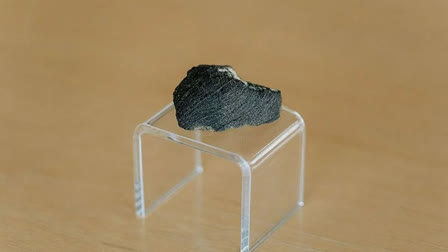Hyderabad:Eleven million years ago, an asteroid impact on Mars ejected fragments into space, one of which landed on Earth near Purdue University. Discovered in 1931, the fragment is known as the Lafayette Meteorite. Early studies revealed it had been exposed to liquid water on Mars, and now scientists, including those from Purdue University, determined the age of the water-altered minerals in the meteorite, publishing their findings in Geochemical Perspective Letters.
Marissa Tremblay, an assistant professor at Purdue University's Department of Earth, Atmospheric, and Planetary Sciences (EAPS) and the lead author of the publication, employed noble gases such as helium, neon, and argon to investigate the physical and chemical processes influencing the surfaces of Earth and other planets. Tremblay notes that certain meteorites from Mars contain minerals that interacted with liquid water while still on the Martian surface.
She mentioned that dating the minerals could indicate when there was liquid water at or near the surface of Mars in the planet's geologic past. Her team dated these minerals in the Martian meteorite Lafayette and found that they formed 742 million years ago. They do not believe there was abundant liquid water on the surface of Mars at that time. Instead, they think the water came from the melting of nearby subsurface ice called permafrost, and that this melting was caused by magmatic activity that still occurs periodically on Mars today.
In the publication, her team demonstrated that the age obtained for the timing of water-rock interaction on Mars was robust and that the chronometer used was not affected by events that happened to Lafayette after its alteration in the presence of water. These events could include the impact that ejected the Lafayette Meteorite from Mars, the heating it experienced during the 11 million years it was floating in space, or the heating it experienced when it fell to Earth and burned up slightly in Earth's atmosphere. However, they were able to show that none of these factors affected the age of aqueous alteration in Lafayette.
Ryan Ickert, a senior research scientist at Purdue University's EAPS, co-authored the paper. He specialises in using heavy radioactive and stable isotopes to study geological processes' timescales. Ickert demonstrated that previous isotope data used to estimate the timing of water-rock interaction on Mars were problematic, and likely affected by other processes.
